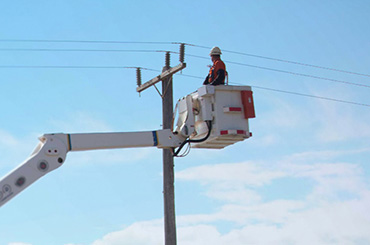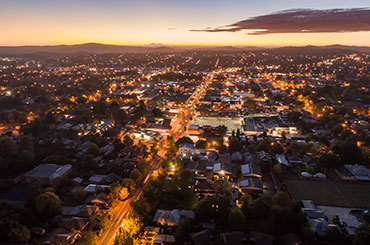Future energy news

04 May 2022
An Australian-first project to understand the value of microgrids across multiple sites has reached a key milestone with the identification of eight study sites to explore feasibility.
As part of the Southcoast Microgrid Reliability Feasibility (SµRF) project, Essential Energy is helping the communities of the Eurobodalla develop a resilient and reliable clean energy future.
Microgrids, or community-scale energy system, link individual solar systems and potentially large-scale solar farms with community batteries. The microgrids can then function in isolation of the network in the event of a power outage.
Last year SµRF successfully applied for Federal Government’s Regional and Remote Communities Reliability Fund funding to research the impact of microgrids on community attitudes, power reliability and network resilience. The SµRF project is led by the Australian National University (ANU), with Eurobodalla-based community group the Southcoast Health and Sustainability Alliance (SHASA); and technology partner Zepben with Essential Energy.
By participating in the project, Essential Energy will develop data-driven knowledge on how microgrids could improve the stability of the network and be part of the solution to increase the resilience of our network for communities’ benefit.
The SuRF Project will shortly announce eight sites in the Eurobodalla area that have been selected to research the value of microgrids. This project is the first on the East Coast to research how best to engage with local communities to ensure their involvement in the development of their local microgrid. These towns will form the basis of community-based co-design case studies into the technical, social and economic viability for microgrids for each of their situations. The research, which is backed by a $3.1m grant from the Department of Industry, Science, Energy and Resources, will run until April 2024 and represents the largest study into microgrid feasibility in regional Australia.
Some of the key criteria used to select the sites were:
- Social vulnerabilities, including the percentage of young, elderly and low-income populations and the number of critical energy loads.
- Technical vulnerabilities, including premises per kilometre of network and average outage duration per premises.
- Social feasibility, referring to the percentage of energy generated locally (known as DER, distributed energy resources).
- Technical feasibility around the total DER capacity and the average daily consumption per premises.
In addition to this score, the project selection team also accounted for other qualitative factors to ensure a range of sites were selected. These factors include known community attitudes and interests towards microgrids, ethnic and cultural representation, network size, density and the type of network, and technical ease to install the microgrid.
You can follow the research here.
The SµRF project is funded by the Federal Government’s Regional and Remote Communities Reliability Fund. It is led by the Battery Storage and Grid Integration Program, Australian National University in partnership with the Southcoast Health and Sustainability Alliance (SHASA), Essential Energy, and Zepben.
*This project has received $3.125 million from the Dept of Industry, Science, Energy and Resources



